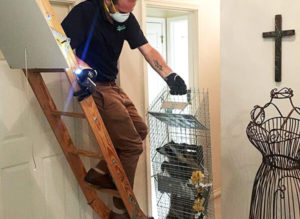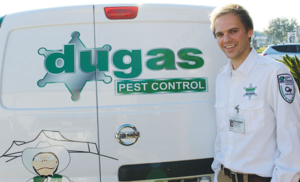 Termites are termites, right? Well, sort of!
Termites are termites, right? Well, sort of!
Sure, all termites are on the hunt for food and water. And unfortunately, food is often found in the form of your home. But knowing what kind of termites are behind an infestation is important, as it helps us create a treatment and prevention plan that will successfully eradicate the problem.
Two kinds of termites are prevalent in Southern Louisiana: Formosan and Native Subterranean.
Knowing the difference can help you spot an infestation and prevent damage.
Formosan termites: the tough guys
Originally hailing from Asia, Formosan termites (Coptotermes Formosanus) are common across the southern states, with sightings as far north as the Canadian border. Fierce defenders of their territory, Formosan termites are fast acting and aggressive. Preferring warm, damp climates, they reproduce quickly. Colonies have up to 350,000 workers, and a queen can lay up to 1,000 eggs in one day!
These termites build their nests in the soil, and make mud tubes to bring food and moisture to their colonies. Preventing Formosan termite infestations means keeping moisture away from your home’s foundation, so properly functioning gutters and downspouts are important. Good ventilation in crawl spaces reduces humidity, and most importantly, eliminate any wood contact with the soil.
A mature Formosan termite colony can cause serious structural damage to a home in as little as six months. Prevention is key with this species.
Native subterranean termites
Native subterranean termites (Reticulitermes) also live in colonies underground and spend their days searching for food. They are found throughout the U.S. in every state but Alaska, making them much more common than the Formosan termite.
Like their Formosan cousins, native subterranean termites build nests in damp soil, making mud tubes to transport food and moisture to their colony. They eat anything containing cellulose, with sharp, scissor-like jaws that can collapse a building entirely if an infestation goes unchecked.
You may not be able to identify which type of termites are swarming in your yard, but either species can cause damage very quickly. If you see winged termites around your home, they’re looking for a new place to live. Make sure your home and property are protected by calling us to inspect, prevent, and remove termites before they cause real trouble.



 Do you enjoy keeping your house warm and cozy? Most of us do, unfortunately, wildlife will be drawn to your home for the same reasons you enjoy being in it. Though some of them will seem cute and fuzzy from afar, they can pose a real threat to you, especially if they manage to enter your home!
Do you enjoy keeping your house warm and cozy? Most of us do, unfortunately, wildlife will be drawn to your home for the same reasons you enjoy being in it. Though some of them will seem cute and fuzzy from afar, they can pose a real threat to you, especially if they manage to enter your home! Spring is around the corner, and along with the warmer weather, pests will soon come out of the woodwork. Of these pests, the termite in particular is one you don’t want to mess with!
Spring is around the corner, and along with the warmer weather, pests will soon come out of the woodwork. Of these pests, the termite in particular is one you don’t want to mess with!  Earlier this week our own Daniel Hill was selected to participate in the prestigious NPMA Executive Leadership program!
Earlier this week our own Daniel Hill was selected to participate in the prestigious NPMA Executive Leadership program!